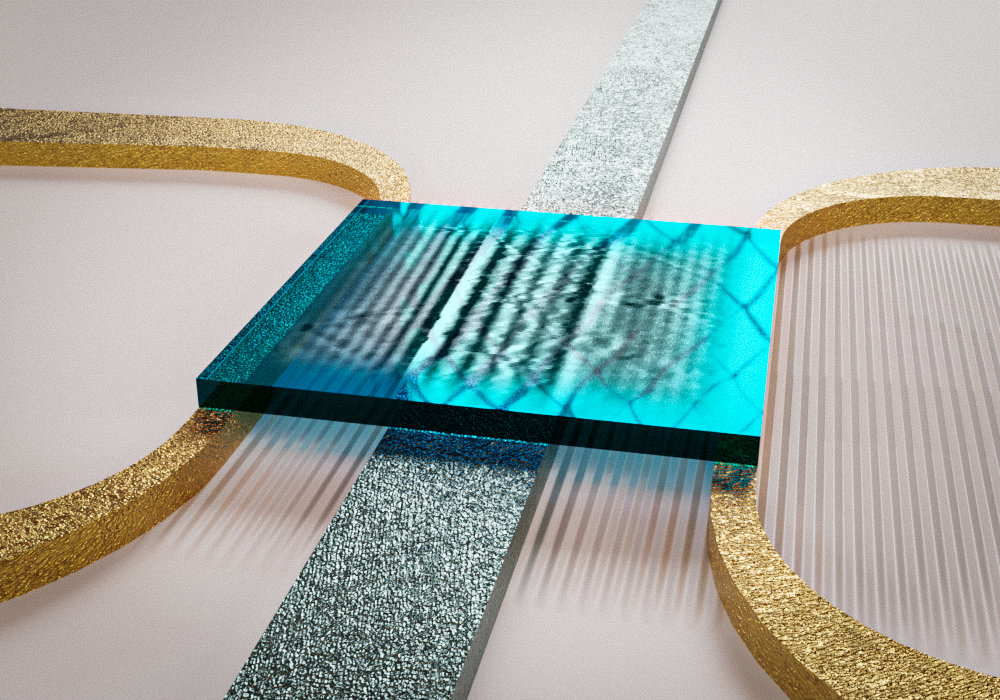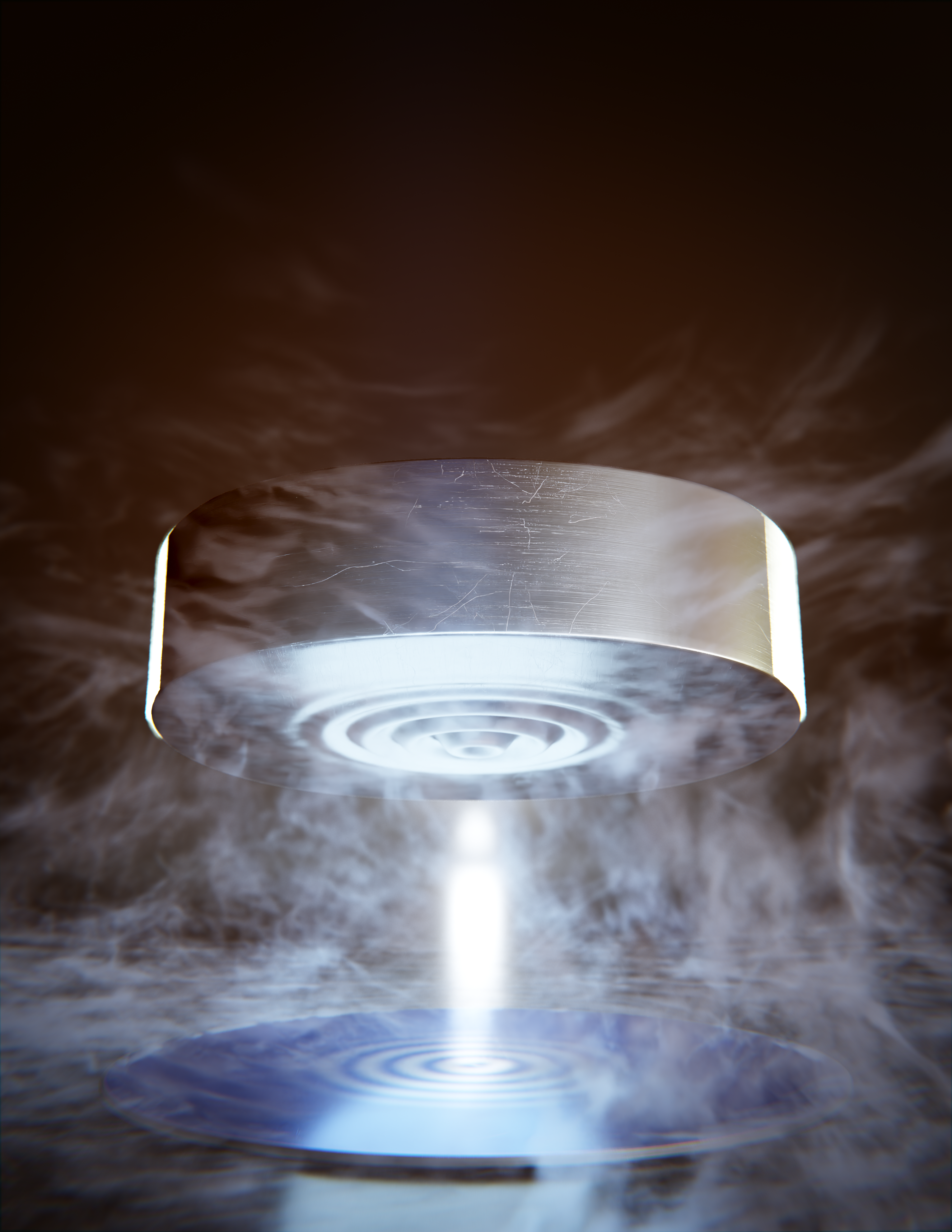Controlling waves in magnets with superconductors for the first time
Quantum physicists at Delft University of Technology have shown that it’s possible to control and manipulate spin waves on a chip using superconductors for the first time. These tiny waves in magnets may offer an alternative to electronics in the future, interesting for energy-efficient information technology or connecting pieces in a quantum computer, for example. The breakthrough, published in Science, primarily gives physicists new insight into the interaction between magnets and superconductors.
Energy-efficient substitute
"Spin waves are waves in a magnetic material that we can use to transmit information," explains Michael Borst, who led the experiment. "Because spin waves can be a promising building block for an energy-efficient replacement for electronics, scientists have been searching for an efficient way to control and manipulate spin waves for years."
Theory predicts that metal electrodes give control over spin waves, but physicists have barely seen such effects in experiments until now. "The breakthrough of our research team is that we show that we can indeed control spin waves properly if we use a superconducting electrode," says Toeno van der Sar, Associate Professor in the Department of Quantum Nanoscience.
Superconducting mirror
It works as follows: a spin wave generates a magnetic field that in turn generates a supercurrent in the superconductor. That supercurrent acts as a mirror for the spin wave: the superconducting electrode reflects the magnetic field back to the spin wave. The superconducting mirror causes spin waves to move up and down more slowly, and that makes the waves easily controllable. Borst: "When spin waves pass under the superconducting electrode, it turns out that their wavelength changes completely! And by varying the temperature of the electrode slightly, we can tune the magnitude of the change very accurately."
"We started with a thin magnetic layer of yttrium iron garnet (YIG), known as the best magnet on Earth. On top of that we laid a superconducting electrode and another electrode to induce the spin waves. By cooling to -268 degrees, we got the electrode into a superconducting state," Van der Sar says. "It was amazing to see that the spin waves got slower and slower as it got colder. That gives us a unique handle to manipulate the spin waves; we can deflect them, reflect them, make them resonate and more. But it also gives us tremendous new insights into the properties of superconductors."

Unique sensor
The researchers imaged the spin waves by measuring their magnetic field with a unique sensor, something that was essential to the experiment. Van der Sar: "We use electrons in diamond as sensors for the magnetic fields of the spin waves. Our lab is pioneering that technique. The cool thing about it is that we can look through the opaque superconductor at the spin waves underneath, just like an MRI scanner can look through the skin into someone's body."
New circuits
"Spin wave technology is still in its infancy," Borst says. "For example, to make energy-efficient computers with this technology, we first have to start building small circuits to perform calculations. Our discovery opens a door: superconducting electrodes allow countless new and energy-efficient spin-wave circuits."
"We can now design devices based on spin waves and superconductors that produce little heat and sound waves," Van der Sar adds. "Think of the spintronics version of frequency filters or resonators, components that can be found in electronic circuits of cell phones, for example. Or circuits that can serve as transistors or connectors between qubits in a quantum computer."



Current information technology (IT) - think computers, servers, networks - runs on electricity and thus on electrons, tiny negatively charged particles that move through an electronic component. "Because the waves generate less heat than existing electronics, spin waves are attractive to new, energy-efficient IT," Van der Sar explains. "Moreover, we can do things with the electron chains that are not possible with ordinary electronics, such as linking quantum bits together via these waves."
Superconductors are materials without electrical resistance that are extremely sensitive to magnetic fields. "The reason for this sensitivity is that magnetic fields can generate extremely strong circulating currents in the superconductor, due to the lack of resistance," Van der Sar explains. "This is used, for example, in sensors for measuring brain activity or in the superconducting bits of a quantum computer. In our research, we harness this effect to control spin waves in magnetic materials."

